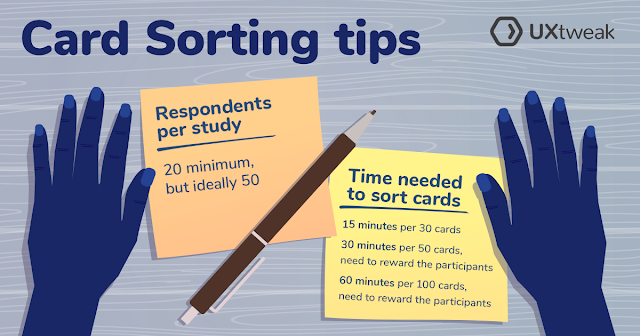Updated on 24 April 2025
In the modern fast-paced digital world, users make instantaneous judgments regarding whether to remain on a website or abandon it. One of the most important determinants of this judgment is visual hierarchy, which is a basic principle of contemporary UI design. Visual hierarchy is the organization and presentation of design elements in a manner that suggests significance and leads users toward intended actions. From typography and colour schemes to layout and spacing, all the visual decisions make their own contribution towards how well information is conveyed.
With increasingly complex digital interfaces and higher expectations from users, it is more important than ever to master visual hierarchy. Not only does it guarantee an attractive appearance, but it also guarantees usability and user interaction. Being a UI/UX designer is a goal for many, and for that purpose, visual hierarchy is an essential skill to know, and taking a good visual design course can be the first step in learning it.
What is Visual Hierarchy?
Visual hierarchy is the process by which the designer orders interface items to indicate relative importance. Through carefully applying design methods like size, color, contrast, alignment, and spacing, designers are able to guide the user's focus to critical content areas, including navigation menus, call-to-action buttons, and product features.
For example, headlines are usually larger and more prominent than body text, grabbing the user's attention first. Likewise, a highly visible CTA button on a neutral background will stand out right away, encouraging user engagement.
Why Visual Hierarchy Matters in UI Design
In user interface design, the aim is to achieve an intuitive, seamless user experience. Visual hierarchy is responsible for:
- Enhancing usability: Organized visual elements minimize cognitive load and allow users to find information easily.
- Improving user engagement: Strategic attention direction increases the likelihood of users engaging with items that serve business objectives, like completing a form or buying something.
- Creating aesthetic balance: A clear visual hierarchy helps in achieving a clean and professional appearance that inspires confidence.
- Boosting conversion rates: Effective visual structure and hierarchy encourage users to take actions that match a website's objectives.
To better understand this hierarchy and apply it in your work, you can consider enrolling in a visual design course.
Key Elements That Define Visual Hierarchy
Here are the design elements that collectively build a strong visual hierarchy in modern UI:
1. Size and Scale
Bigger elements automatically draw more attention. Designers take advantage of this to emphasize content by making headings, icons, or main buttons bigger while making supporting text smaller.
2. Typography
Font selection, weight, and spacing all affect how quickly and easily users can scan and comprehend content. Bold text commands attention, but lighter text should be reserved for less important information.
3. Color and Contrast
Color palettes are highly effective at triggering emotions and controlling user focus. High contrast between items (such as white text on a black background) enhances readability and captures the eye's attention in key areas.
4. Whitespace
Also referred to as negative space, whitespace avoids clutter and organizes elements logically. It provides space for the design to breathe and allows the interface to be organized and easy to use.
5. Alignment and Positioning
Positioning key elements in standard locations (such as top-left for logos or top-right for logins) conforms to user expectations and improves navigation.
6. Repetition and Consistency
Consistent application of visual patterns, such as consistent heading sizes or button colors, builds up a unified design language that reinforces intuitive user flow.
The Role of Visual Hierarchy in Responsive and Mobile Design
With users accessing content across various devices, maintaining a strong visual hierarchy in responsive design is essential. Mobile screens offer less real estate, making it even more important to prioritize content clearly.
Designers now adopt mobile-first approaches where they define the hierarchy for smaller screens and then scale up. This involves using collapsible menus, prioritizing content stacks, and ensuring tap-friendly CTA buttons stand out.
Visual Hierarchy in Action: Real-World Examples
Consider popular platforms like Spotify, Airbnb, and Google Maps. Each of these interfaces guides users through beautifully crafted visual hierarchies:
- Spotify highlights playlists with bold covers and large headlines, while secondary options like settings remain small and less obtrusive.
- Airbnb uses white space and prominent CTA buttons to streamline the booking journey.
- Google Maps prioritizes routes and directions visually while minimizing less-used features like satellite view options.
These real-world examples showcase how effective visual hierarchy leads to intuitive navigation and user satisfaction.
How to Master Visual Hierarchy: The Power of Design Courses
To build a career in UI/UX design or to sharpen your existing skills, enrolling in a visual design course can offer structured learning and practical insights. These courses help you:
- Understand design principles and their application in digital interfaces.
- Learn from real-world case studies and expert feedback.
- Build a portfolio that reflects your understanding of user-centric design.
One standout option for learners in India is the IIT Hyderabad design course, which blends academic rigor with practical application. The program dives deep into human-centered design, cognitive science, and interaction design—all crucial areas for mastering visual hierarchy.
Whether you're a beginner or a working professional, such courses provide the ideal launchpad for advancing in the design industry.
Visual Hierarchy and Emerging Tech
The future of UI design is increasingly intertwined with technologies like generative AI, AR/VR, and voice interfaces. These innovations bring new challenges and opportunities for visual hierarchy. For example:
- Voice UIs reduce visual content but require clear visual prompts.
- AR/VR demands spatial hierarchy—guiding user attention in 3D spaces.
- AI-driven design tools like Figma AI help automate visual hierarchy suggestions based on user behavior.
As tech evolves, the principles of visual hierarchy remain relevant but need to be adapted across different media.
Conclusion
Visual hierarchy is the silent engine that drives user attention, engagement, and satisfaction in UI design. It’s not just about making interfaces attractive—it's about making them work seamlessly for the end user.
For those aiming to build impactful digital products or enter the design industry, understanding visual hierarchy is essential. Enrolling in a specialized visual design course, such as the one at IIT Hyderabad, can equip you with the right skills and tools to thrive in this competitive field.
As digital experiences become more immersive and user-centric, mastering visual hierarchy will continue to be a critical differentiator in successful UI design.
Further readings
Top Design Entrance Exams in India
Design Thinking Workshop - Complete Guide
7 principles of UX design for innovative AI solutions
The Gestalt Principles - IxDF
Top Colleges for B.Des in India
DISCLOSURE: This article is published as part of a paid partnership with the author/company. The views and opinions expressed are those of the author/company.
The Gestalt Principles - IxDF
Top Colleges for B.Des in India
DISCLOSURE: This article is published as part of a paid partnership with the author/company. The views and opinions expressed are those of the author/company.















%20in%20India.png)




%20in%20India.png)


